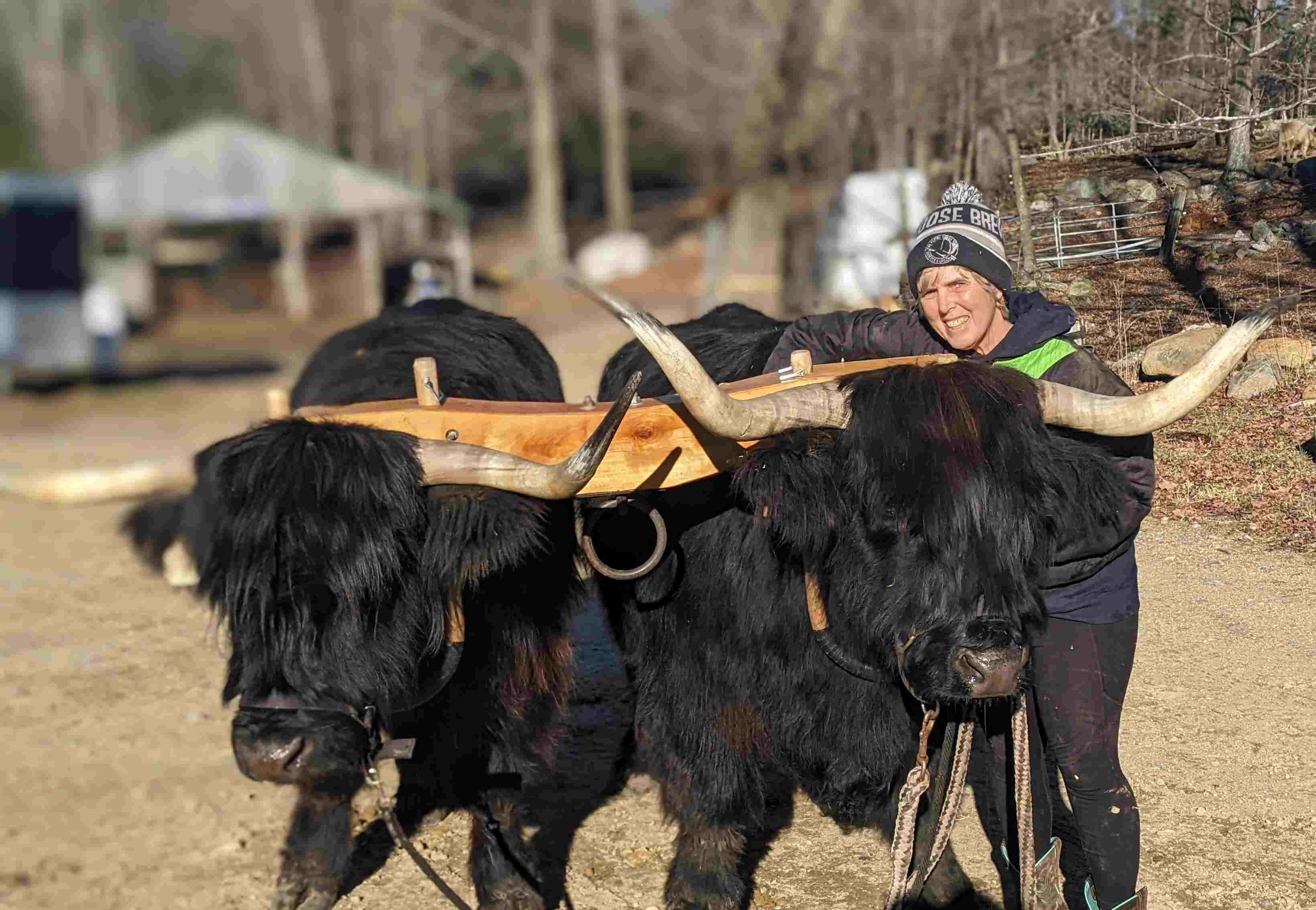The Chemistry of Cattle
posted on
July 24, 2023
Saturn (left) and Claudette (right), two Belted Galloway calves, lick a block of trace minerals while Dolly (middle), a Scottish Highland heifer, waits her turn. Cattle, just like humans, need minerals to survive. My cattle have access to a mineral block and loose minerals to supplement their hay and grass diet.

The yearlings crowded around the pan, butting each other for the best spot. You’d think the pan contained yummy grain, but I had filled it with course red granules of minerals instead. Cattle, just like humans, need minerals to survive, and the yearling herd had been without salt for a few days.
My cattle get seven of the ten minerals they need by eating hay or grass, but that diet is deficient in copper, zinc, and selenium. Without minerals, cows may lose their appetites, their hooves may deteriorate, and in extreme cases, they can die. Bottom line: Cattle perform better and utilize feed more efficiently with minerals in their diet.
About 15 years ago, one of my 4-month-old calves seemed sluggish but was otherwise healthy. A few days later, he was dead, with his distressed mom standing over him.
Devastated, I called the vet, who, without many costly tests, could not determine a cause of death. The next year another calf died in the same way.
New England Soil
With two cases to analyze, the vet could point the finger at selenium deficiency. When a third calf showed similar symptoms, the vet ordered selenium injections. Selenium deficiency causes “white muscle disease” (similar to muscular dystrophy) in newborn calves. Selenium deficiency can also cause calves to be weak at birth and increases their susceptibility to diseases like scours. New England soil lacks selenium, so it must be provided to cattle as a mineral block for licking or granulated for regular chomping. Other sources of selenium are seafood and nuts, but sadly they are not on the bovine menu.
While selenium is essential for calf health, it can also be toxic. Cattle need just the right dosage of the correct minerals to thrive. And what is the best way to administer the proper dosage? Consult the calf.
Mineral Supplement
Cattle have brilliant digestive systems that tell the animal what and how much to eat. Given the opportunity, a cow will always make the right choice – not too much or too little. So we provide loose minerals in a pan, and they help themselves. Most minerals are not stored in their bodies in significant amounts. So the consistent intake of a balanced mineral supplement is essential.
We also provide a solid 20-pound mineral block called a “salt lick,” which the cattle can lick when the loose minerals have been eaten. The licks come in red (trace minerals), white (just salt), and green (trace minerals, including selenium), and one block can last six months or more.
Humans have more varied ways to get our minerals, but our digestive systems are not as discerning as a cow’s. For instance, I’d prefer getting my salt and potassium from a Triscuit – not a salt block. The difference is that I’d keep eating long after my system’s need for minerals is satisfied. Triscuit anyone?
* * *
Carole Soule's book, "Yes, I Name Them," will be available in September. She is co-owner of Miles Smith Farm in Loudon, N.H., where she raises beef and shares the joys of her farm with kids and adults. She can be reached at carole@soulecoaching.com.



